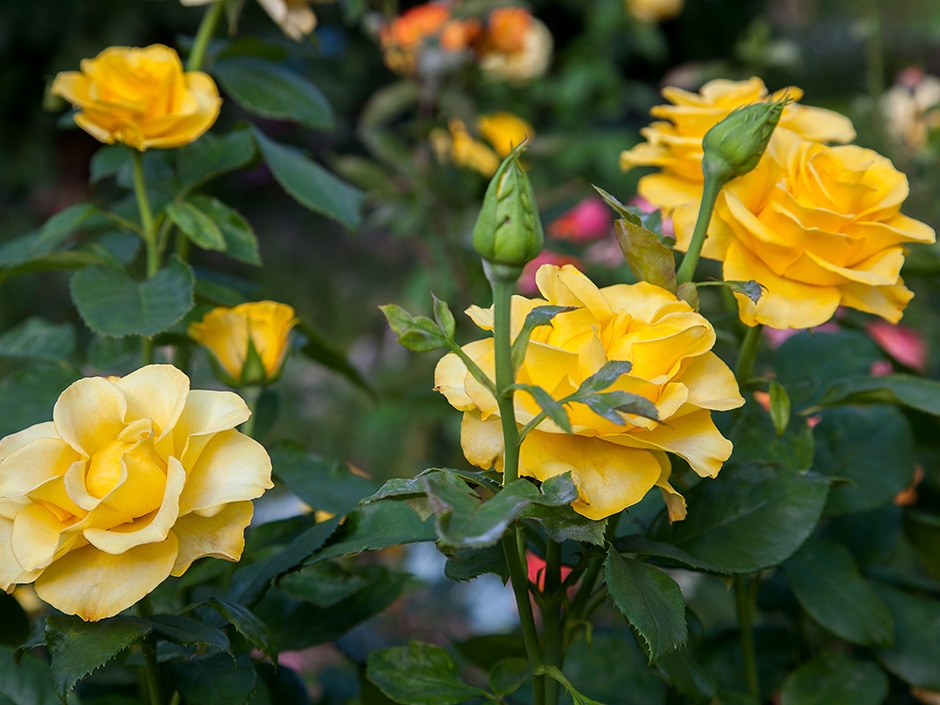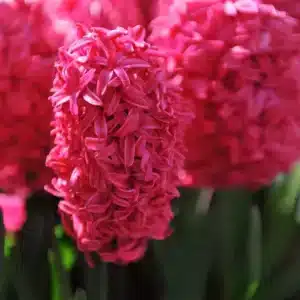The South African rose calendar
DIY and how-to

Our expert team has compiled your essential monthly to-do list, tailored to roses in the South African climate, to make sure your roses flourish, blossom and bloom. Read on for a useful, easy-to-follow, month-by-month guide to help your roses thrive throughout the year.
JANUARY
- Give your roses a light summer pruning to help stimulate growth for an extended blooming period.
- Water your plants regularly, especially during dry weather – remember that roses enjoy lots of water at this time of the year.
- Continue with preventative fungal spraying and feeding.
- Deadhead your rose bushes.
FEBRUARY
- Spray for rust and check the underside of leaves for red spider.
- Continue deadheading your roses.
- As new buds develop, feed with a handful of 5:1:5 or 8:1:5 granular fertiliser around the base of each plant, as you would in September
- fertiliser around the base of each plant.
- Continue to water your roses regularly.
MARCH
- Decrease watering as the weather cools, watering only as needed.
- Continue deadheading and feeding with a handful of 5:1:5 or 8:1:5 granular fertiliser around the base of each plant.
- Spray regularly for aphids, mildew, black spot and rust.
APRIL
- Watering requirements remain the same as for March.
- Feed your roses with a 3:1:5 fertiliser.
- Continue to control aphids, and spray for mildew, black spot and rust.
MAY
- Continue spraying your roses for black spot.
JUNE
- Prepare roses for moving and dig holes for new roses.
- Feed your standard roses with 3:1:5 fertiliser.
JULY
- Now is the time to prune your roses and remove old mulch.
- Loosen soil and dig in 30g superphosphate and a handful of slow release 3:2:1 fertiliser.
- Apply manure.
- Apply lime sulphur.
AUGUST
- Complete pruning.
- Mulch around the bushes.
- Repeat lime sulphur application.
SEPTEMBER
- Increase watering as the weather warms up.
- Give your roses their first food of the new season – use 5:1:5 or 8:1:5 granular fertiliser and sprinkle a handful around the base of each plant.
- Continue the treatment for black spot and mildew.
- Use sprays to control aphids, thrips and bollworms.
OCTOBER
- You should be enjoying your first flush of flowers by now. While it could be tempting to choose blooms from the back of your rose bush so the missing flowers are less noticeable, it’s best to cut roses that receive the most sunlight, as these will have the strongest stems, helping them last longer once cut.
- Feed as for September.
- Water regularly – each plant needs about 10 litres of water a week, especially as the weather heats up.
- Spray buds of roses for caterpillars, bollworm eggs, fruit beetles, etc. Remember: only spray the buds when using an insecticide.
- Check for rust on leaves and treat with fungicide if they’re affected.
NOVEMBER
- Deadhead your roses. Always cut the rose back just above the fifth node when the bloom fades.
- Water twice a week.
- Use a marine or manure-based feed to boost your plants.
- Feed as for September.
- Check the underside of leaves for red spider and treat with a spray if infected.
- Continue preventative spraying for fungal infections.
DECEMBER
- Cut out unproductive twiggy growth.
- Continue to water twice weekly.
- Remove side buds from hybrid tea bushes if larger blooms are desired.
- Feed as for September.
- Top up mulch if necessary.
- Check the underside of leaves for red spider and spray if infected.
You might also like
Shop online
-
COTYLEDON RED TRIM
- R89.99
-
- Sale!
Hyacinths Red Bulbs
- R39.99




